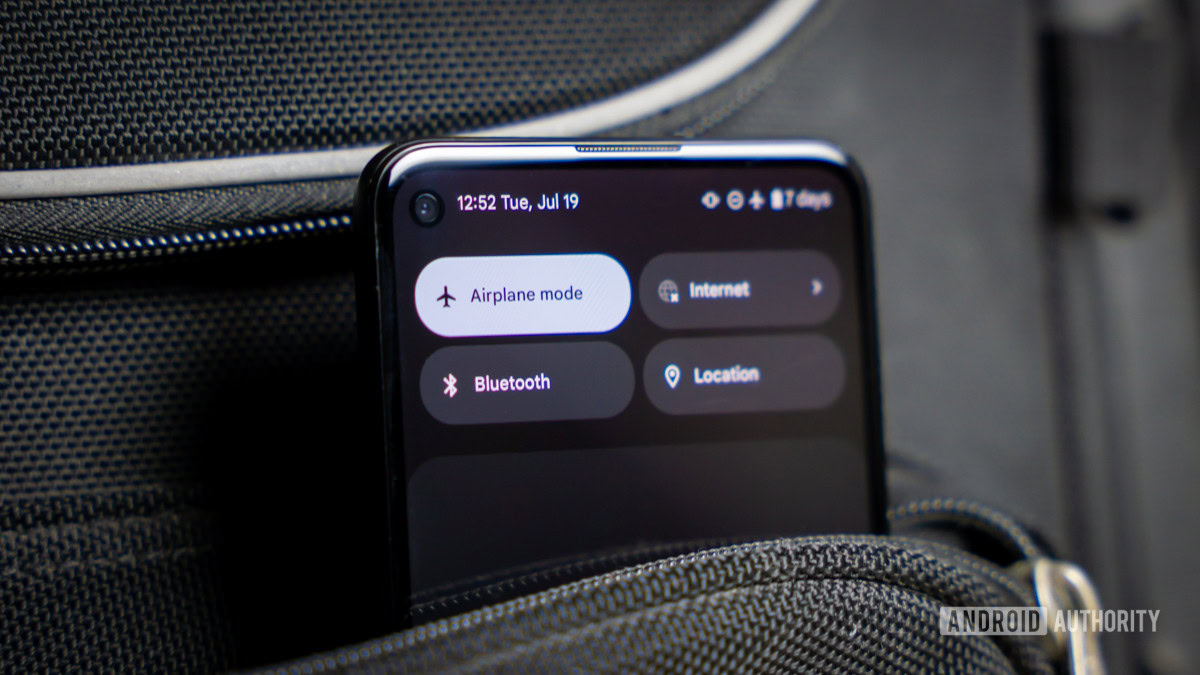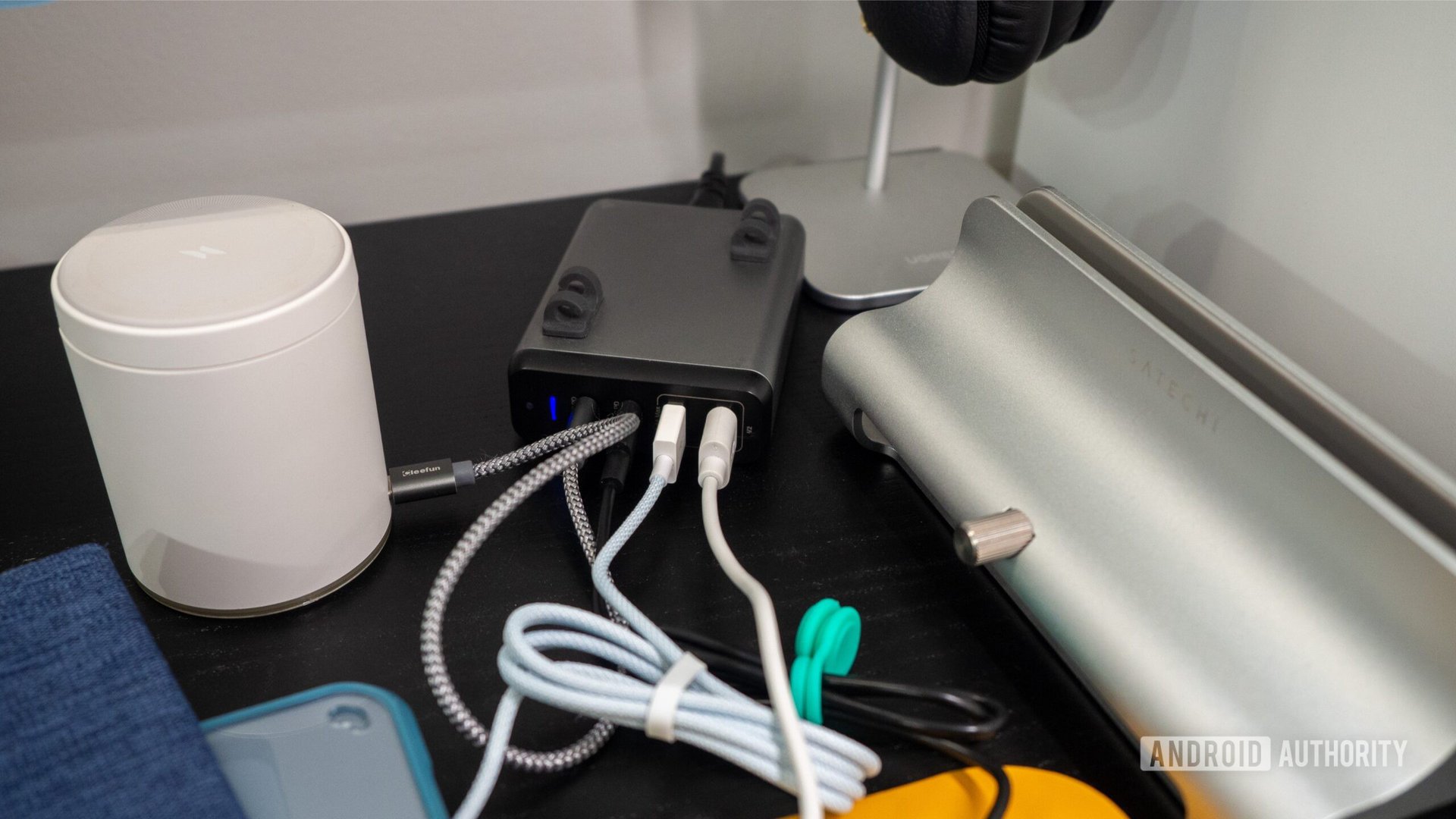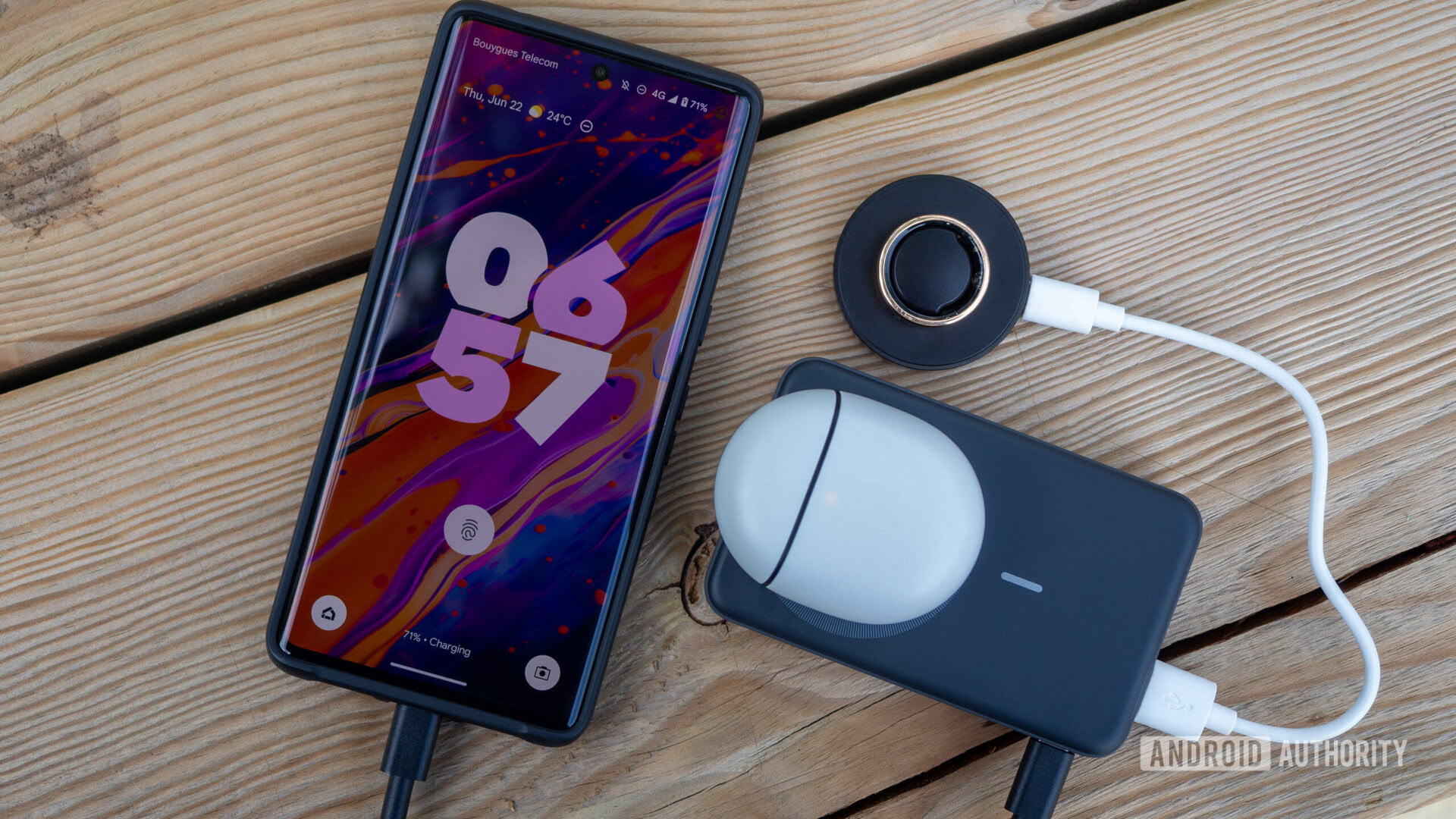
As much as smartphone technology has advanced in the past decade, some Android phones still feel slow to charge — especially when you’re about to head out for work, school, or a trip and forgot to charge overnight. When speed is of the essence, there are a number of tactics you can use to make Android phones charge faster, although you may still want to upgrade the hardware.
How to make your Android phone charge faster
Rita Al-Khoury / Android Authority
In the same way that dieting and weight gain is about calories in versus calories out, charging faster is about internal energy versus energy loss. In this main section, we’ll provide tips that don’t require buying anything new – it’s all about maximizing efficiency.
1. Use wired charging
Wired charging is definitely faster than wireless charging. Most Android phones can only reach peak wattage through USB-C, which often reaches 20W. Compare that to wireless charging, which is often a maximum of 10 to 15 watts. Even Google’s Pixel Stand maxes out at 23 watts, and that’s only with compatible Pixel phones. Some Samsung phones can reach 45W via USB, and if you’re lucky enough to have access, the Realme GT 3 manages a whopping 240W. In theory it can take you from 0 to 100% in less than 10 minutes.
USB-C also tends to be more reliable. Wireless chargers require perfect coil alignment to be (reasonably) effective, and there’s always a risk that a bump could knock your phone out of place, or stop the charger completely. The Qi2’s magnetic lock technology promises to help, but USB-C still reigns supreme.
2. Turn off your phone (if you can)
The best way to reduce power drain is to turn off your phone completely. Charging must continue at full speed, so when you are connected to a suitable charger (see next section), there is no faster scenario.
The downside, of course, is that you give up the ability to check charging progress, let alone use apps or read notifications. For this reason, some people may want to skip this option, and we strongly suggest you do so when you are concerned about important messages from work or family.
3. Use a wall socket, not a power bank or computer
Simply put, this is the only way to guarantee wired charging speeds. Although USB 3.x and 4.x connections support very high outputs if equipped for USB-PD, up to 240W, you’re unlikely to get that intensity from your computer’s USB ports or most portable power banks. There are exceptions, like the Anker Prime, but that’s about it – we can’t rely on it.
4. Switch your phone to low power mode
If you can’t turn off your phone, or simply don’t want to, the best thing is to put it in low power mode. In many Android devices this option is called Battery Saver, but in your case it may have a different name.
Depending on your phone, the option will do things like turn off your screen faster, reduce background sync activity, switch from 5G to 4G, and/or restrict high power consumption apps. There’s also an Ultra Battery Saver mode on Pixel phones, which does things like throttle CPU performance and turn off notifications of paused apps. You should avoid this most of the time, but it’s a way to keep essentials available while prioritizing shipping.
5. Disable unnecessary wireless radios

Edgar Cervantes / Android Authority
Although your phone’s screen and processor tend to drain the most power, wireless technology can drain a lot as well, especially if your phone is constantly downloading files or scanning for available networks.
The easiest way to disable wireless radios is to turn on Airplane Mode, but it’s not always the best. By default, this disables not only the cellular network, but also Wi-Fi and Bluetooth, which is an obvious problem if you use or need to use wireless earbuds. some Type of Internet connection. You may have to reconfigure Airplane mode, or use quick settings to disable individual radios that you’re not currently using. If you’re away from home, for example, you’ll probably be able to disable Wi-Fi unless you need it for hotspots or Android Auto.
6. Do not use your phone while charging
We’ve already explained this in many ways, but the more you make your phone run, the more power it will consume. Find something else to occupy yourself with unless you need to answer important calls and messages. The worst thing you can do is play a 3D game like Fortnite or PUBG Mobile.
7. Keep your phone cool, but not too cold
The ideal charging temperature is between 50 and 86 degrees F (10 and 30 degrees C). To keep your phone in this sweet spot, you may need to do things like move it out of sunlight, place it next to a fan, or even take it out of its case if it’s something like a leather wallet. Remember, your phone will naturally get warmer while charging as well, so a phone that reaches 85 degrees Fahrenheit, for example, could be pushed outside of the ideal zone.
Likewise, you may need to warm up your phone in some circumstances. A condition that is a liability in a Texas summer can be ideal for an Ontario winter.
Should you get a new charger for your Android phone?

Rita Al-Khoury / Android Authority
Multi-port charger, wireless charger, vertical stand
maybe. The important thing is to find a charging adapter that matches or exceeds the maximum wattage your phone can provide. A 45W charger will be more than enough for existing Google and Samsung phones, for example, but it won’t allow you to exploit the 80W possible with the OnePlus 11, let alone the 240W of the Realme GT 3. With such maximum capacities, you may have to rely on a dedicated charger And a cable set included in the box.
However, on this topic, it’s becoming increasingly rare for phone manufacturers to include a charger, and when they do, it may actually be below spec. Likewise, not every USB cable is created equal, so you may need to check if the cable you’re using is rated for the power your charger can provide. A poor cable can throttle even the most powerful charging units.
common questions
There are many possible explanations, but generally it boils down to how powerful your charger is, the wattage your phone can provide, and how much power it’s actively consuming. For example, a 100W USB-C charger won’t do anything extra if your phone is only capable of 25W, and will only slow things down even more while watching video or playing games. Wireless charging is always slower than wired charging as well.
It’s hard to say without details, but you’ll need to double-check your phone’s charger, cable, power supply, and USB port (if applicable). Damage or debris can interfere. If damage occurs, you should stop using the affected component immediately.
In the case of wireless chargers, you may just need to place your phone back on the charging pad. With wired charging, try disconnecting and reconnecting your USB cable – sometimes that’s enough to overcome temporary glitches.
never. Modern phones strictly regulate the amount of power flowing, so when your phone is charging, there is little to no risk of overloading or damaging the battery. However, you can extend your phone’s battery life if you take advantage of a feature like Google Pixel’s Adaptive Charging, which keeps your battery at 80% until you’re about to wake up.
A substantial amount of additional heat is expected, since power is flowing at full capacity from one location to another, and anything that doesn’t reach your battery will be emitted as waste. Because it’s inherently inefficient, wireless charging tends to generate more heat than USB.
However, your phone should still be comfortable enough to touch. If it is too hot to handle, you should stop charging immediately and wipe it for any signs of damage or debris. If nothing, it should be safe to resume, but we recommend finding ways to cool down your phone first.
In today’s fast-paced world, we rely heavily on our smartphones to stay connected, navigate our daily lives, and access important information. However, the constant use of our Android phones can often lead to quickly draining battery life, leaving us in need of a fast and efficient charging solution. Luckily, there are several tips and tricks that can help speed up the charging process and get you back to full battery power in no time. By implementing some simple adjustments and utilizing the right tools, you can maximize the charging speed of your Android phone and ensure that it stays powered up when you need it most.

